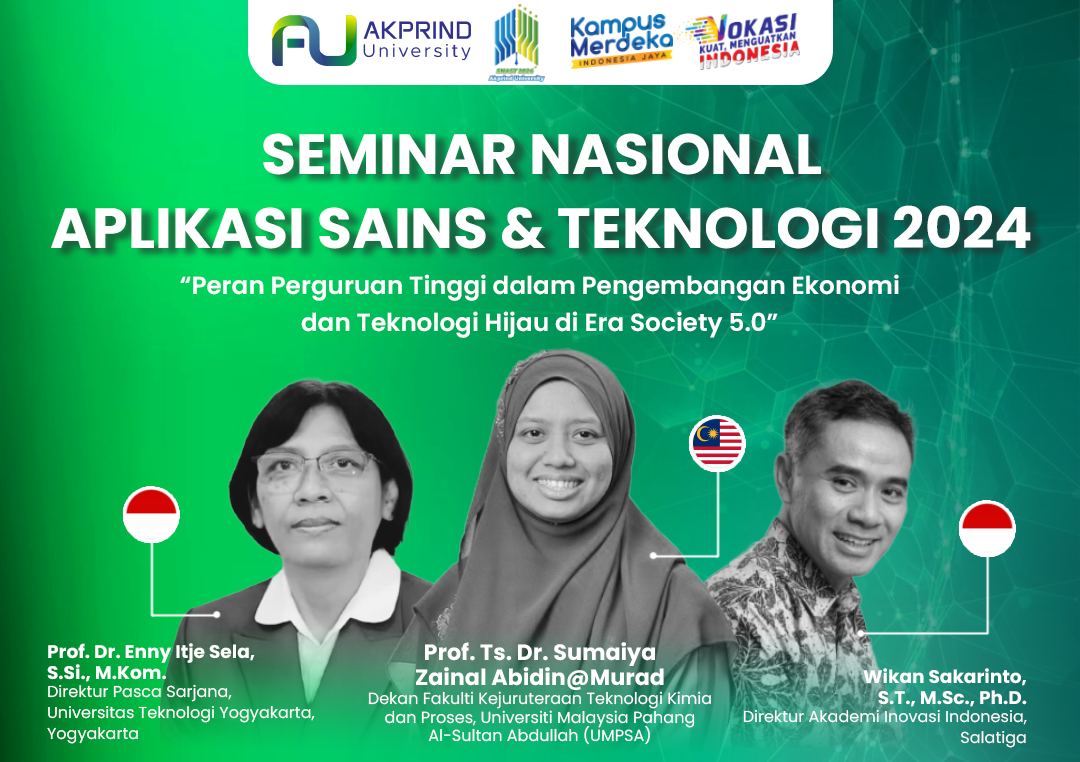PENERIMAAN DAN PENGARUH PENGGUNAAN QUICK RESPONSE CODE INDONESIAN STANDARD (QRIS) PADA USAHA MIKRO, KECIL, DAN MENENGAH
DOI:
https://doi.org/10.34151/prosidingsnast.v1i1.4949Keywords:
MSMEs, QRIS, SEM-PLS, TAMAbstract
This study aimed to identify the factors influencing the adoption of the Quick Response Code Indonesian Standard (QRIS) among Micro, Small, and Medium Enterprises (MSMEs) in the D.I. Yogyakarta Region and its surrounding areas, as well as to examine the impact of this payment method on MSMEs' performance. By utilizing an extended Technology Acceptance Model (TAM) and Structural Equation Modeling-Partial Least Square (SEM-PLS), this research explored the relationships between perceived ease of use, attitude towards using, behavioral intention, actual use, and SMEs performance. The findings revealed that perceived ease of use significantly influenced attitude towards using, which in turn positively impacted behavioral intention and actual use. Furthermore, actual use was found to have a significant positive effect on SMEs performance. Path analysis also indicated a mediation relationship, whereby attitude towards using had a significant positive impact on SMEs performance through behavioral intention and actual use. These findings highlight the importance of government efforts to cultivate a positive attitude among MSMEs towards QRIS, particularly by enhancing perceived ease of use.
References
Asosiasi Penyelenggara Jasa Internet Indonesia, 2022, Profil Internet Indonesia 2022, https://apjii.or.id/survei, diakses pada 29 Oktober 2022
bi.go.id, 2022, Sistem Pembayaran dan Pengelolaan Uang Rupiah, https://www.bi.go.id/id/fungsi-utama/sistem-pembayaran/default.aspx, diakses pada 18 Agustus 2022
bi.go.id, 2022, Bahan Sosialisasi Quick Response Code Indonesian Standard, https://www.bi.go.id/id/edukasi/Documents/Bahan-Sosialisasi-QRIS.pdf, diakses pada 18 Agustus 2022
bi.go.id, 2022, Kanal dan Layanan, https://www.bi.go.id/QRIS/default.aspx, diakses pada 18 Agustus 2022
dataindonesia.id, 2022, Berapa jumlah UMKM di Indonesia?, https://dataindonesia.id/sektor-riil/detail/berapa-jumlah-umkm-di-indonesia diakses pada 18 Oktober 2022.
dataindonesia.id, 2022, Survei: Mayoritas UMKM Pakai Internet untuk Berjualan, https://dataindonesia.id/digital/detail/survei-mayoritas-umkm-pakai-internet-untuk-berjualan, diakses pada 18 Oktober 2022.
Davis, F. D., Bagozzi, R. P., and Warshaw, P. R., 1989, User Acceptance of Computer Technology: A Comparison of Two Theoretical Models’, Management Science, 35(8), pp. 982–1003. Available at: http://www.jstor.org.ezproxy.ugm.ac.id/stable/2632151.
Hair, J. F., Hult, G. T., Ringle, C. M., and Sarstedt, M., 2014, A Primer on Partial Least Squares Structural Equation Modeling, Thousand Oks: Sage Publications.
Hair, J. F., Risher, J. J., Sarstedt, M., and Ringle, C. M., 2019, When to use and how to report the results of PLS-SEM, European Business Review, 31(1), pp. 2–24. doi: 10.1108/EBR-11-2018-0203.
Hair, J. F., Sarstedt, M., Hopkins, L., and Kuppelwiser, V. G., 2014, Partial least squares structural equation modeling (PLS-SEM), European Business Review, 26(2), pp. 106–121. doi: 10.1108/EBR-10-2013-0128.
Humaira, L. L., Syamsudin and Isa, M., 2020, M-Wallet Adoption and SMEs Performance, pp. 29–35. doi: 10.2991/AEBMR.K.201222.005.
jogja.antaranews.com, 2020, Empat pasar tradisional di Yogyakarta dilengkapi QRIS layani transaksi nontunai, https://jogja.antaranews.com/berita/462840/empat-pasar-tradisional-di-yogyakarta-dilengkapi-qris-layani-transaksi-nontunai, diakses pada 4 Oktiber 2022.
krjogja.com, 2020, Edukasi Terus Dilakukan, 4 Pasar Tradisional Bakal Dilengkapi QRIS, https://www.krjogja.com/berita-lokal/read/281531/edukasi-terus-dilakukan-4-pasar-tradisional-bakal-
money.kompas.com., 2022, Mayoritas Digunakan UMKM, Saat Ini Pengguna QRIS Mencapai 23 Juta, https://money.kompas.com/read/2022/10/04/142000726/mayoritas-digunakan-umkm-saat-ini-pengguna-qris-mencapai-23-juta, diakses pada 18 Oktober 2022.
Peraturan Pemerinta Nomor 7 Tahun 2021 tentang Kemudahan, Pelindungan, dan Pemberdayaan Koperasi dan Usaha Mikro, Kecil, dan Menengah., https://peraturan.bpk.go.id/Home/Details/161837/pp-no-7-tahun-2021#:~:text=PP%20No.%207%20Tahun%202021,dan%20Menengah%20%5BJDIH%20BPK%20RI%5D, diakses pada tanggal 29 Agustus 2022.
qris.id, 2022, Quick Response Indonesian Standard, https://qris.id, diakses pada tanggal 28 Oktober 2022.
Sudiatmika, N. B. P., and Martini, I. A. O., 2022, Faktor-faktor memengaruhi niat pelaku UMKM kota Denpasar menggunakan QRIS, Jurnal Magister Manajemen Universitas Mataram, 11(3), 239-254.
Sulistyaningsih, H. and Hanggraeni, D., 2021, The Impact of Technological, Organisational, Environmental Factors on The Adoption of QR Code Indonesian Standard and Micro Small Medium Enterprise Performance, Turkish Journal of Computer and Mathematics Education, Vol. 12 (14), pp. 5325-5341.
Syah, D. H., Dongoran, F. R., Nugrahadi, E. W., and Aditia, R., 2022, Understanding the technology acceptance model in QRIS usage: Evidence from SMEs in Indonesia, International Journal of Business and Social Science, 11(6), 12-19.
Tenggino, D. and Mauritsius, T., 2022, Evaluation of factors affecting intention to use QRIS payment transaction, ICIC International 2022, 16(4), pp. 343–349. doi: 10.24507/icicel.16.04.343.
Downloads
Published
Issue
Section
License
Copyright (c) 2024 Arbaina Mayasari, Yun Prihantina Mulyani, Fitri Trapsilawati, Mirwan Ushada

This work is licensed under a Creative Commons Attribution-ShareAlike 4.0 International License.







